Wagner cast iron cookware is regarded by many as some of the finest examples of 19th and 20th century cast iron. Much of the cast iron is over 100 years old and still usable today. These antique pans are sought-after by enthusiasts who prefer vintage cast iron to newer pans. But identifying and dating these old Wagner Ware Sidney -o-pans can be tricky.
So, with this article, I hope to help you and other proud owners identify and give an estimate of the age of your cookware. You can also learn the history of your cast iron, which the Wagner Manufacturing Company manufactured.
Table Of Contents
- Wagner cast iron. “Why is it so collectible?”
- Learn the history of the Wagner Manufacturing Company.
- Where you can buy Wagner cast iron.
- Considerations when purchasing Wagner cast iron cookware.
- You can identify and date antique Wagner cast iron using trademarks and logos.
- Final thoughts on collecting vintage Wagner Ware cast iron.
But first, here is a quick look at the Wagner Manufacturing Company.
Identify And Date Your Wagner Cast Iron Skillets Using Logos. Also, Learn The Fascinating History Of Wagner Manufacturing.
Background To Wagner Manufacturing Cast Iron.
Founders | Milton M. Wagner and Bernard P. Wagner |
Operational Dates | The foundry in Sidney operated from 1891-1959 |
Located | The Wagner Manufacturing foundry was in Sidney, Shelby County, Ohio. |
Product Line | Wagner was one of the largest American manufacturers of cast iron products in the 20th century. Their product line included skillets, kettles, bean pots, Dutch Ovens, roasters, fruit presses, scoops, broilers, Griddles, waffle irons, muffin pans, and cornbread pans. The company also had a range of aluminum cookware. |
Wagner Brands | Wagner labeled their cookware under the following names: Wagner, Wagner Ware Sidney -o-, Wagner Ware, National, Long Life, Magnalite, Wardway, and Ward’s Cast Iron. |
Signature Products | Wagner is best known for the Sidney -O- range of skillets and Dutch Ovens. |
Reason For Closure | The reason for the closure of the foundry came from two fronts. Firstly, the Wagner family sold their interests in the company in 1953 to the Randell Company. Secondly, the company struggled financially because of a drop in sales. The decline in sales was due to two World Wars, the Great Depression, the development of new cookware materials, and the increase of lower-priced imports from Asia |
Wagner After Buyout (Non-Collectible) | In 1957, the Randall Company purchased long-term competitor Griswold from McGraw Edison. The Randall Company sold the cast iron businesses to Textron Corp in 1959. General Housewares Corporation bought Textron in 1969. In 1994, the production of Wagner Ware ended. |
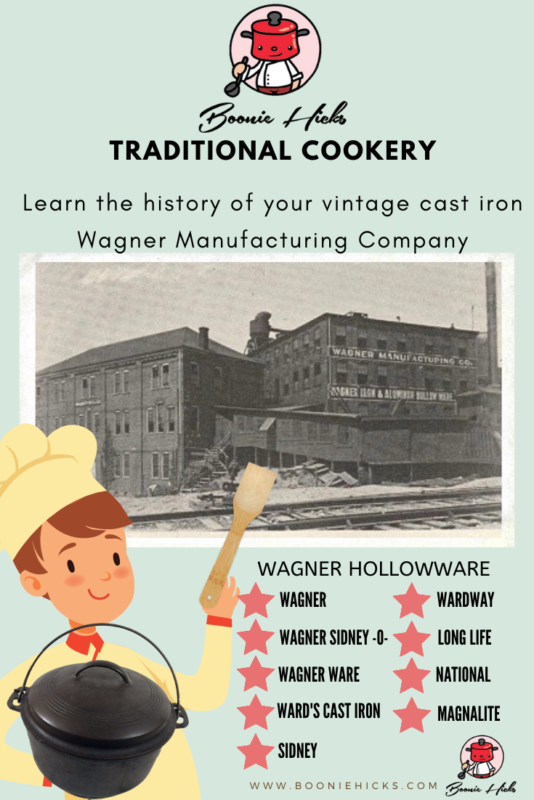
Why Is Wagner Cast Iron Collectible?
Super Smooth Cooking Surface.
Wagner cast iron is highly collectible. Like most antique cast iron, Wagner manufactured high-quality cookware for their entire range of cast iron products.
Unlike Wapak cast iron ironware, it often has characteristic casting flaws. Wagner cast iron tends to have a few casting flaws, resulting in very smooth cookware on both the interior and exterior of the cookware.
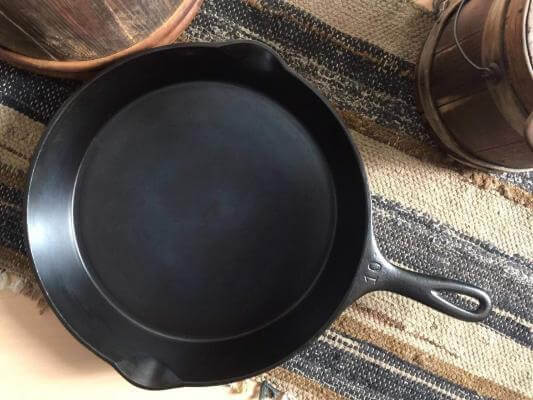
Focus On Quality
Imagine that workers would have worked on individual pieces of ironware. It was machined to smooth the interior and exterior of each pan. You can only see this level of detail in high-end cast iron cookware such as Le Creuset and Staub.
Today, Le Creuset and Staub benefit from combining traditional and modern manufacturing methods. However, the workers at Wagner could make cast iron cookware without casting flaws or bubbles. Must have taken great skill and attention to detail.
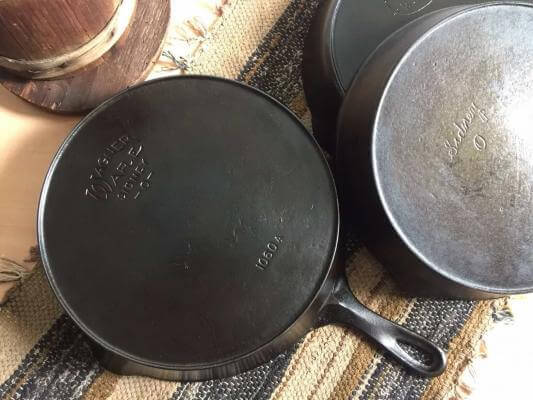
Wagner Made A Wide Range Of Cast Iron Cookware.
You can’t go wrong with an old Wagner cast iron skillet. It will serve you well for years, and they’re great fun. However, you may want to consider a Wagner Dutch oven. They are super smooth, and just like the skillets, they are reasonably priced. You can also buy cast iron muffin pans, which can be pretty cheap. But watch out for shipping costs that can increase the overall price drastically. Some of Wagner cast-iron cookware range includes:
- Dutch ovens
- Griddles
- Gem pans
- Waffle irons
- Skillets
You can even collect Wagner cast iron cornbread pans that look like corn cobs. Wagner Manufacturing also produced aluminum cookware, which must have seemed revolutionary.
Collect Your Favorite Logo.
If you want a vintage skillet, then Wagner skillets are a great choice. You can choose from sixteen different logos and trademarks or markings. I like pans with heat rings, while others may prefer a pan with a smooth base.
I think this wide selection makes Wagner cookware more collectible than other manufacturers, such as Vollrath and Martin Stove and Range, which manufacture a limited range of products.
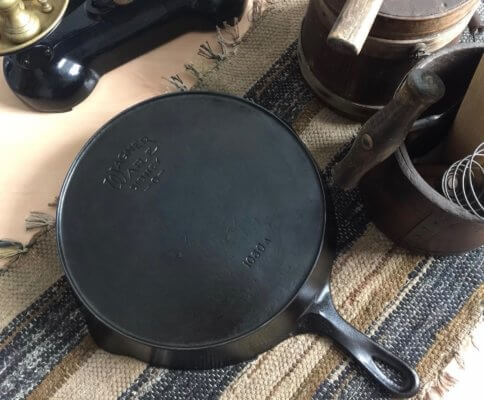
Wagner Manufacturing Company Focused On Quality Over Quantity.
Quality was a focus from the very start for Wagner Manufacturing Company. They even advertised this selling point to consumers. Old advertisements read;
We do not strive to manufacture hollowware as cheaply as possible but as well as it can be made. We cannot afford to put on the market ware that will not sustain our reputation. The name Wagner is on the bottom of each piece of ware.
Wagner Manufacturing Company History
Founders And Foundry
Who Founded Wagner Manufacturing? | Wagner Manufacturing Company was founded in 1891 by Milton M. and Bernard P. Wagner. However, two more Wagner brothers, Louis and William Wagner, joined the company in the following years. Another key player in the foundation of the company was R. Bingham. Bingham previously worked at Marion Stove Company and the Sidney Manufacturing Company. |
Where Was Wagner Cast Iron And Wagner Ware Made? | The company had its ironworks in Sidney, Shelby County, Ohio. Early cookware from Wagner Manufacturing had a simple Wagner marking on the back of the ironware. Wagner included Sidney O. in their cookware around 1895. The term Wagner Ware first appeared in the logo in the 1920s. |
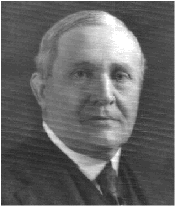
The Wagner Product Line Added Nickel Plating, Aluminum, And Magnalite.
Nickel-Plated Cast Iron | To complement their cast iron range, Wagner added a nickel-plated range. Unlike cast iron and copper pots, nickel plating does not react to acidic foods such as tomatoes, which can taint food. It’s easy to look past the development of nickel-plating. But, in the 19th century, bonding two metals together would have required much metal casting expertise. |
Aluminum Cookware | Along with nickel-plated cast iron, the Wagner brothers in 1894 manufactured a line of aluminum cookware, and Wagner Manufacturing was one of the first companies to do so. |
| Aluminum Cookware Exported To Europe | By 1913, Wagner cast iron and aluminum products were selling in Europe. |
| Magnalite | In the 1930s, Wagner manufactured a cookware line with a patented aluminum alloy called Magnalite. |
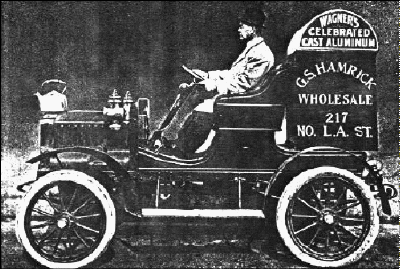
Wagner Manufacturing Buys Their Sidney Competition.
| Wagner Bought Sidney Hollowware Company. | In 1897, Wagner bought the Sidney-based competitor Sidney Hollow Ware Co. from the founder and owner Phillip Smith. Sidney Hollow Ware made high-quality cast iron cookware that was extremely light and smooth. Sidney Hollow Ware Co. was also an early adopter of nickel-plating cast iron. |
Why Did Wagner Buy Sidney Hollow Ware Company? | It was a brilliant idea to buy the Sidney Hollow Ware Company. After all, Wagner Manufacturing and Sidney competed in the same city and made comparable products. However, it was common knowledge that Smith made a tidy profit from his original investment in the foundry. To run the Sidney Foundry, William H. Wagner joined the family business to oversee the operation. |
Wagner Sold Sidney Hollow Ware Back To Phillip Smith. | In 1903, Wagner Manufacturing sold the Sidney Hollow Ware Company to the founder, Phillip Smith. Sadly, Phillip Smith did not reopen the foundry due to health reasons. |
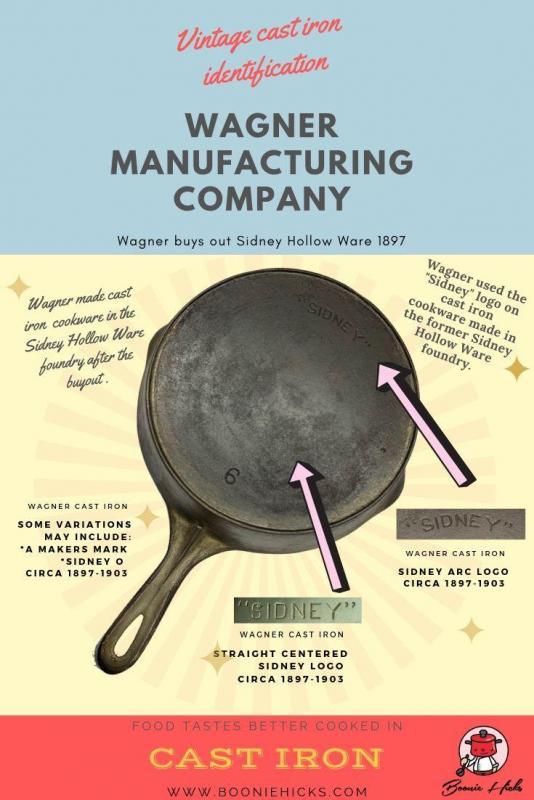
Wagner Introduced A New Product Line To Stop A Decline In Sales.
| The Great Depression (Magnalite) | I have to take my hats off to Wagner because they introduced a new product line called Magnalite in one of the deepest recessions the world has ever seen. Wagner Manufacturing was steadfast in making only quality products. For this reason, the cookware is collected and highly usable. |
| The Sales Decline | Wagner introduced Magnalite to stop falling sales at Wagner Manufacturing; it was not due to their product range. Magnalite was hugely popular, but it could not offset the effect of the worldwide recession. From 1929-1941, the US was in the grips of what we now call the Great Depression. Therefore, it was not only Wagner. However, many foundries struggled financially to survive. Many didn’t. |
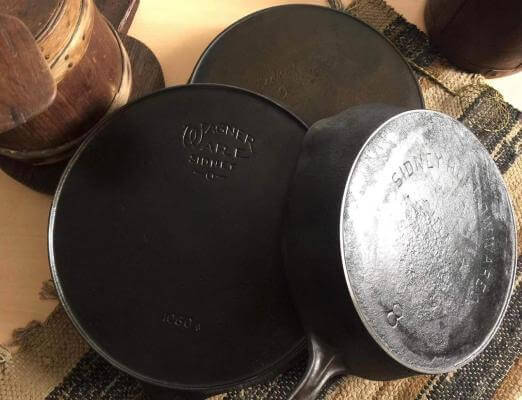
The Family Sells Their Interest In The Foundry.
Wagner Family Sells The Company To Randall Corp. | Wagner Manufacturing Co. lasted longer than many foundries. However, in 1952, Wagner was sold to the Randall Company. Unbelievably, the Randall Company was a car parts manufacturer. |
Textron Buys Randall | In 1959, another business called Tetron bought Wagner. Textron also purchases Griswold Manufacturing Company. At this date, cast iron enthusiasts consider this the end of Wagner Ware production. Wagner cast iron pans made after this date are considered not collectible. |
General House Wares | General Housewares Corporation in 1969 bought the rights of Griswold and Wagner. |
Is Wagner Ware Still Made? | With the world rediscovering cast iron cookware, will we see Wagner Ware skillets manufactured again? General Houses Ware stopped the manufacture of Wagner Ware in 1994. However, there is a glimmer of hope for Wagner Ware. In 2014, American Culinary bought both the Wagner and Griswold trademarks. So, fingers crossed, cast-iron fans may one day decide to manufacture Wagner cast iron again. |
Where Can You Get Your Hands On Some Wagner Ware?
- Grandparents (best deal and great to keep your heritage in the family).
- Antique stores (check online to compare the store price).
- Garage sales (rescue those poor skillets from the tip).
- Flea markets (search the markets for hidden gems).
- Online (largest selection available; however, asking prices can vary greatly.
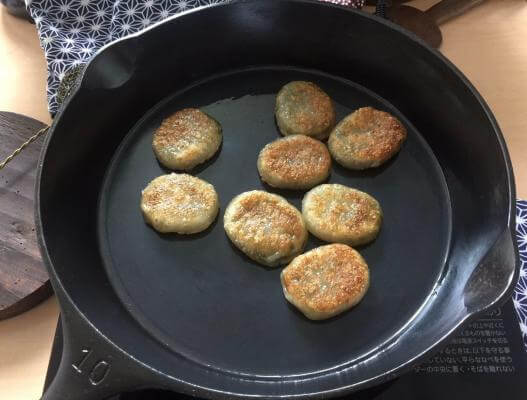
Buying Considerations Before You Buy Antique Wagner Ware
There Is Plenty Of Wagner Cast Iron Around, So Take Your Time.
There is no shortage of Wagner cast iron. Wagner had a large percentage of the cookware market back in its heyday. And plenty of fantastic Wagner skillets and Dutch ovens are in excellent condition.
What Size Skillet Or Dutch Oven Suits Your Needs?
The first thing you may want to think about is the size you need. There are often plenty of #8 skillets around. This size seems to be the most common for Wagner skillets and other vintage cast iron manufacturers, such as Favorite Piqua.
Inspect Carefully Since A Lot Of Wagner Ware Is Nickel-Plated.
Check the cookware carefully. The Wagner Manufacturing Company was an early adopter of nickel plating. However, most of Wagner cookware is unplated iron. Heavy seasoning may hide nickel plating. Nickel-plated can wear off or be patchy in places. Take a close look before purchasing.
Would You Like A Wagner Ware Skillet With A Smooth Bottom Or Heat Ring?
Do you want a pan with a smooth bottom or one with a heat ring? The older Wagner Ware skillets will have a heat ring, while the later-made pans have a smooth, flat base. It is a personal preference. I tend to like the older skillets with heat rings. They have more character, but the smooth-bottom Wagner cookware tends to be a little cheaper. And they are great cooking pans, too.
Does The Cookware Sit Flat?
As with all antique cast iron, asking the seller if the pan sits flat could be a good idea. A lever base is practical if cooking on a flat surface such as induction or glass.
Learn To Date And Identify Your Wagner Cast Iron Using Logos And Markings.
Although I’ve researched carefully, please only use the dates as an approximation.
Wagner cast iron cookware, to my knowledge, has sixteen known logos, brands, or markings. These include:
Straight Wagner Logo 1890s-1915
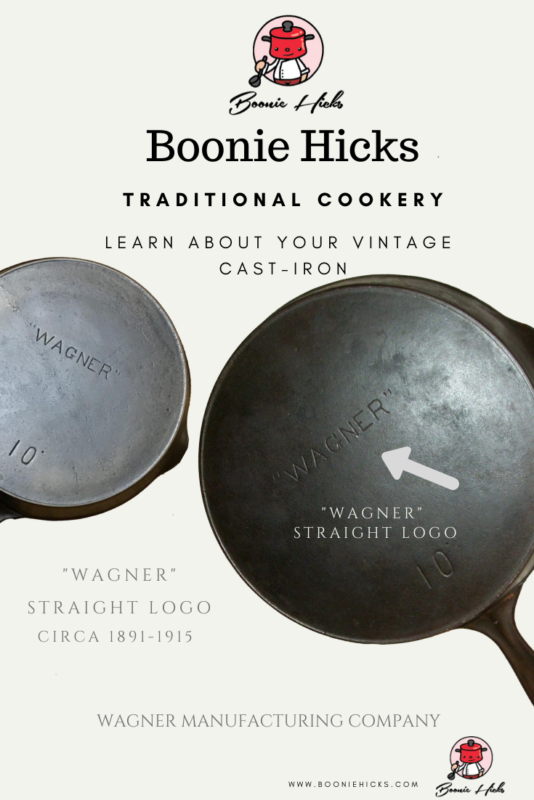
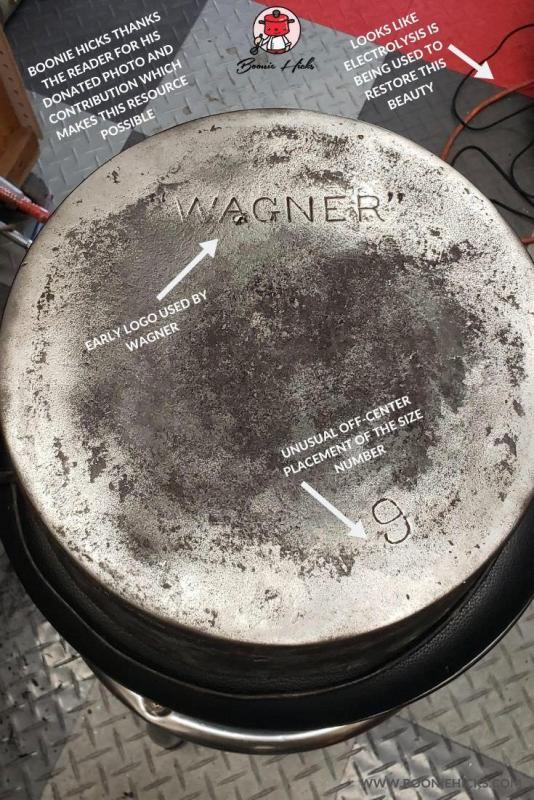
Wagner Arc Logo 1891-1910
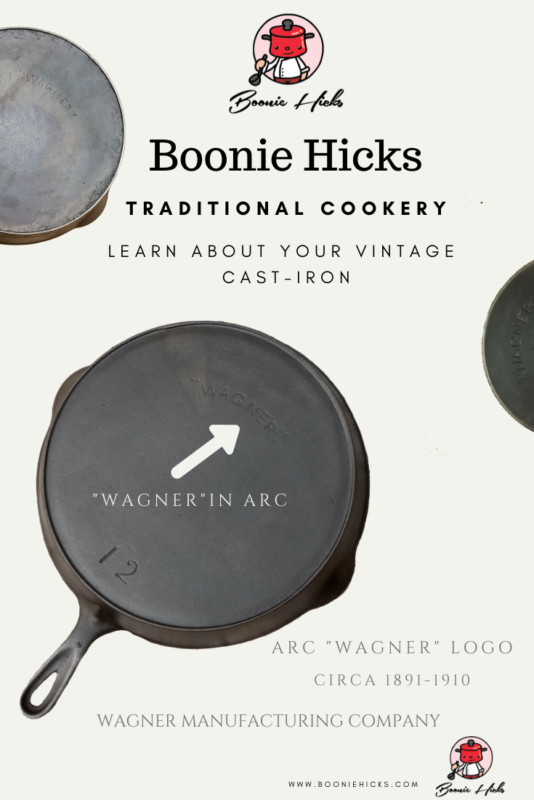

Double Arc Wagner Sidney O 1895-1915
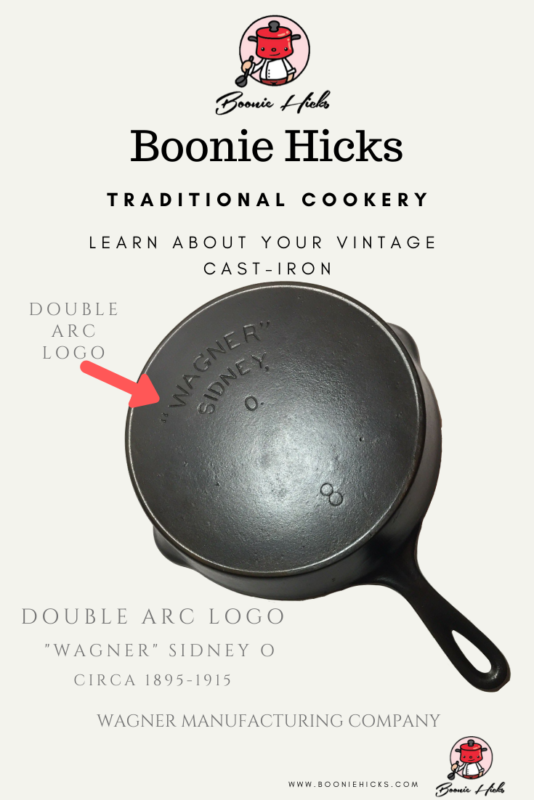
Sidney Arc logo Circa 1897-1903.
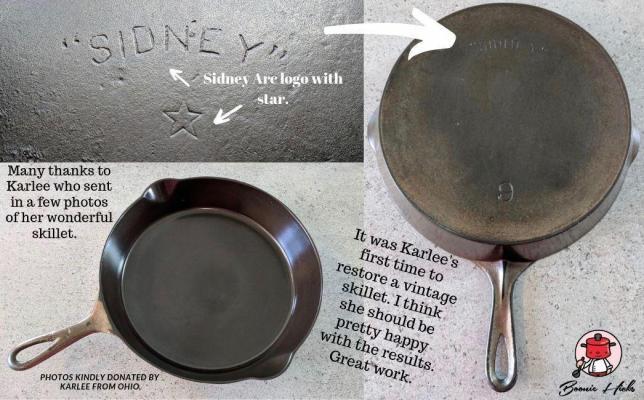
Straight Sidney Logo Circa 1897-1903.
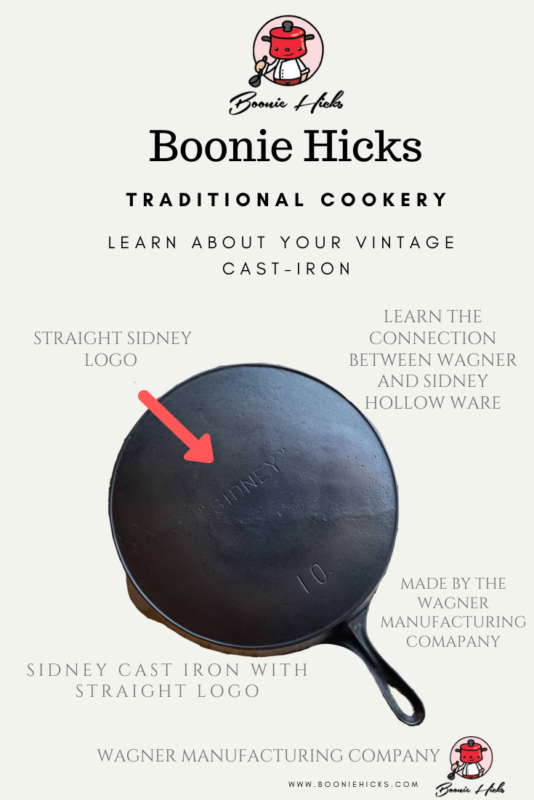
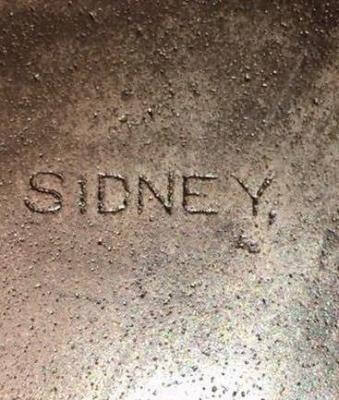
Straight Wagner Sidney O. (Centered.) 1910-1915
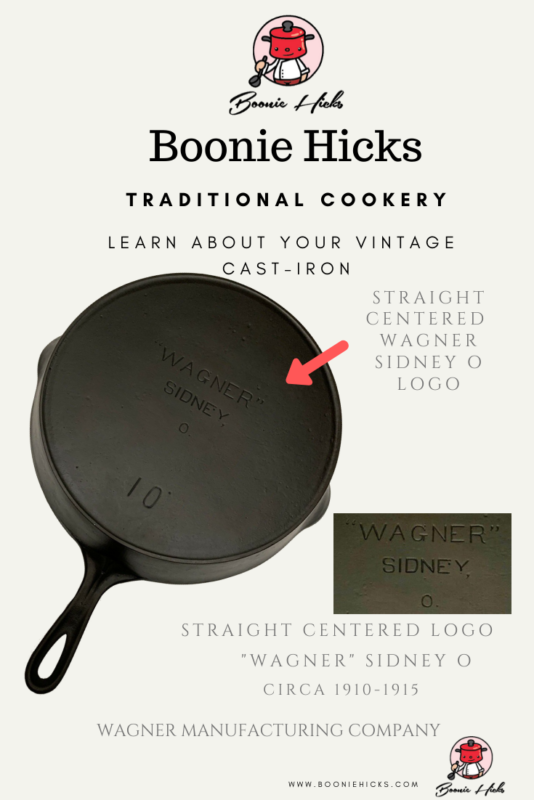
Wagner Sidney O. Wagner Slightly Arced While The Sidney Lettering Is Straight. Circa 1915-1920s
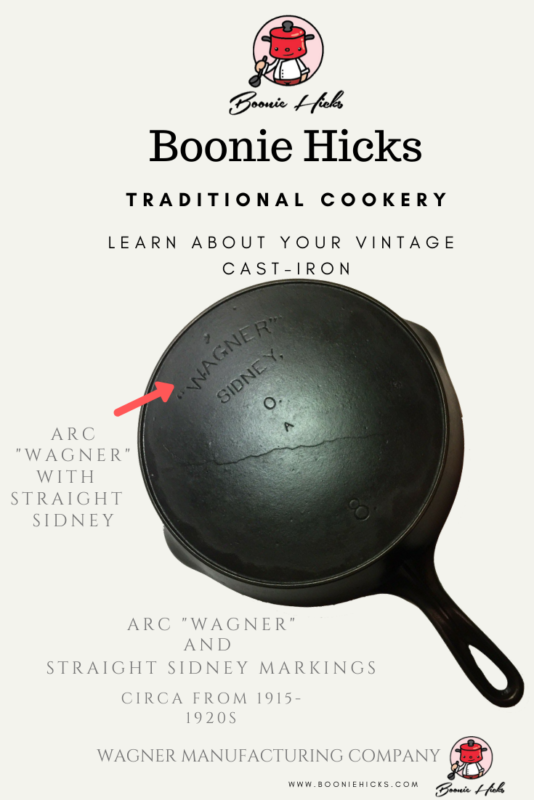
First Wagner Ware Sidney O. With Arc Wagner And Straight Ware And Sidney. Circa 1920s.
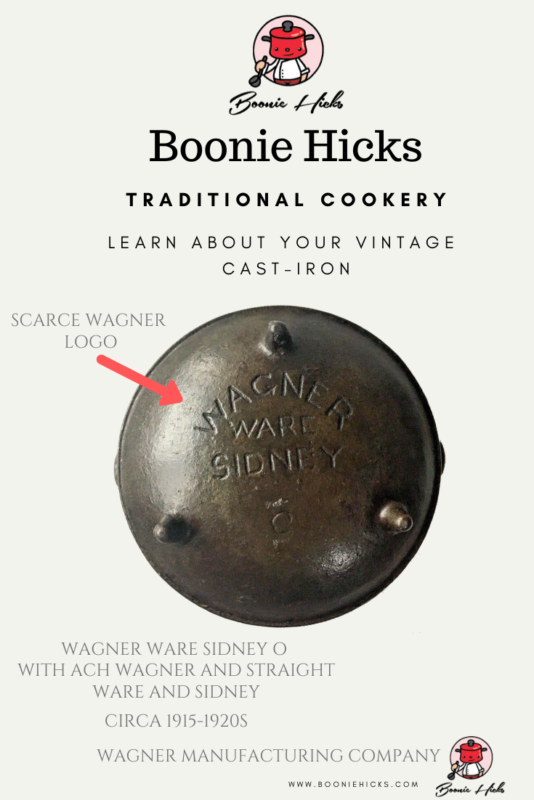
Stylized Wagner Ware Sidney O. for regular skillets. Circa 1920-1924 with heat ring and single-digit size number. 1924-1935 with a heat ring and a four-digit pattern number. Around 1935-1959, for skillets with no heat ring.
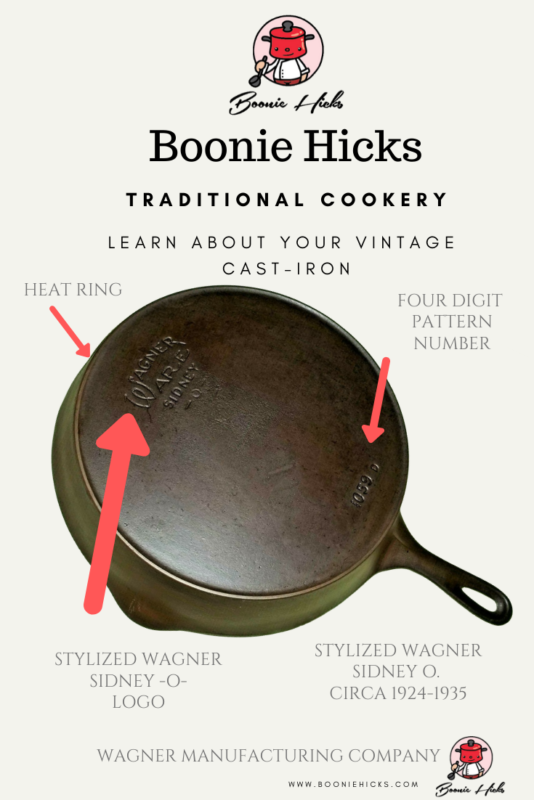
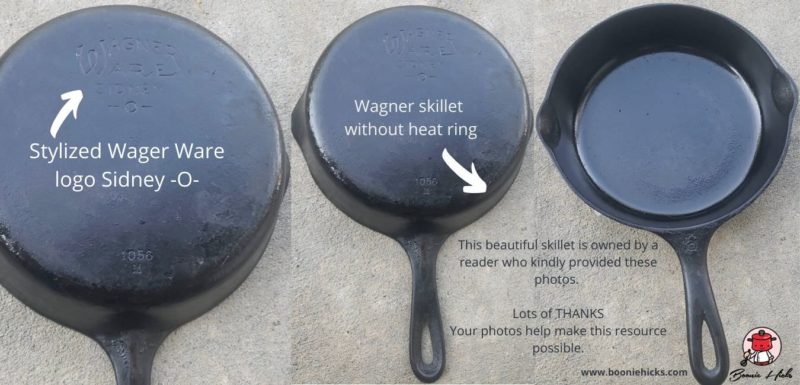
Centralized Stylized Wagner Sidney O. 1924-1935 With Heat Ring.
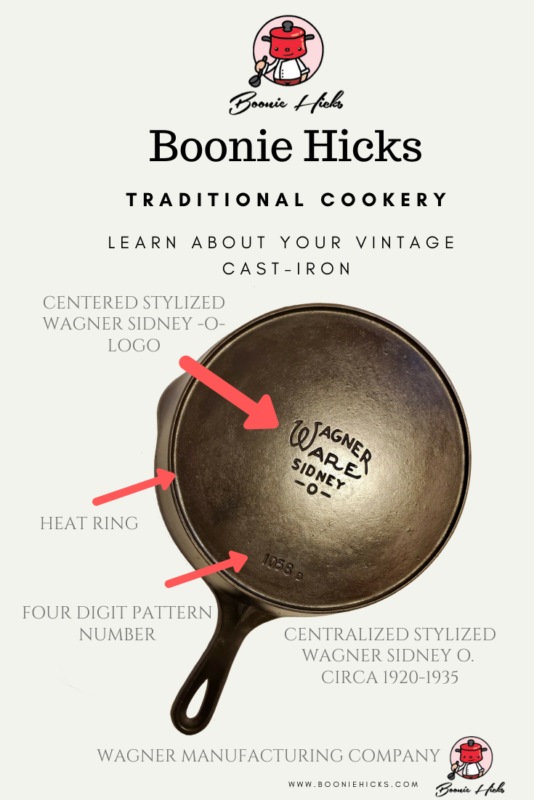
Pie Logo 1924-1934. However, Manufacturing Dates Are Uncertain.
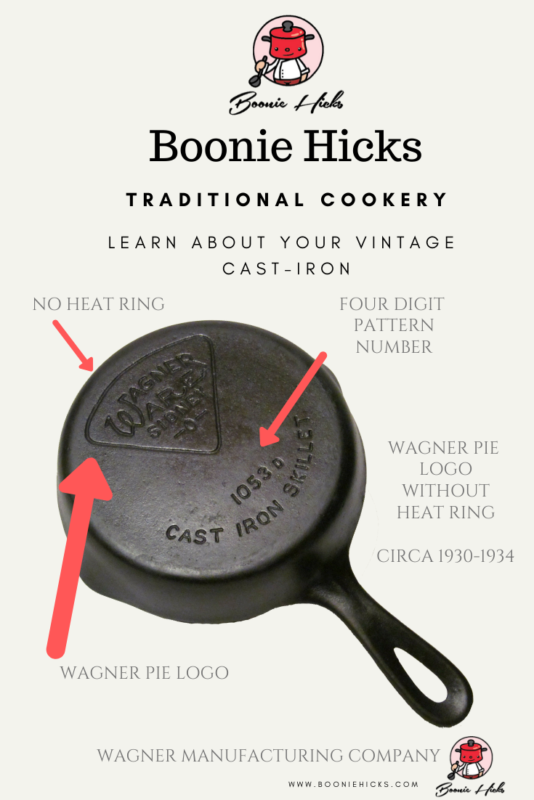
National Cast Iron Dates Between 1914 and 1940s
There are several different versions of cast iron with the National marking. Wanger marketed the Nation brand as entry-level cookware for budget-conscious consumers. Wagner made the National line circa 1914 to 1940.
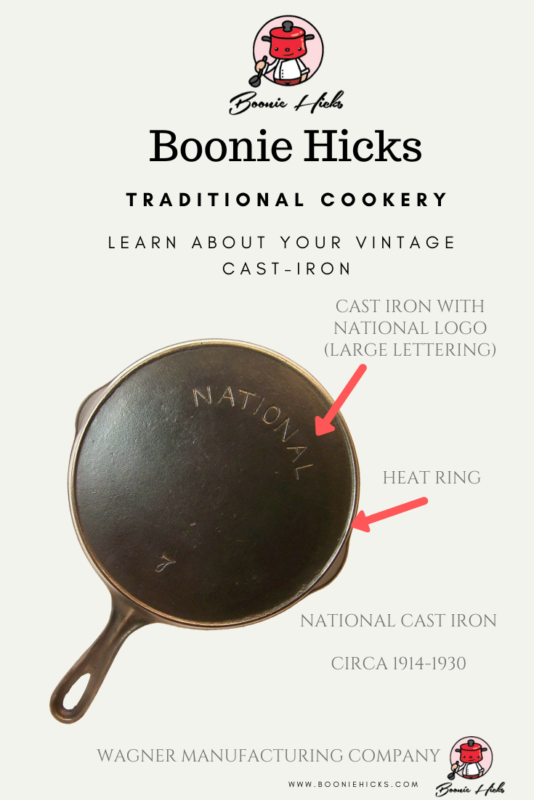
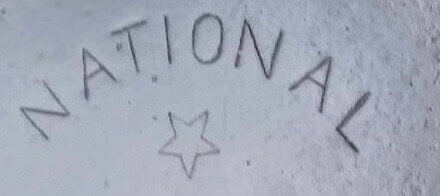
Long Life Logo 1930s.
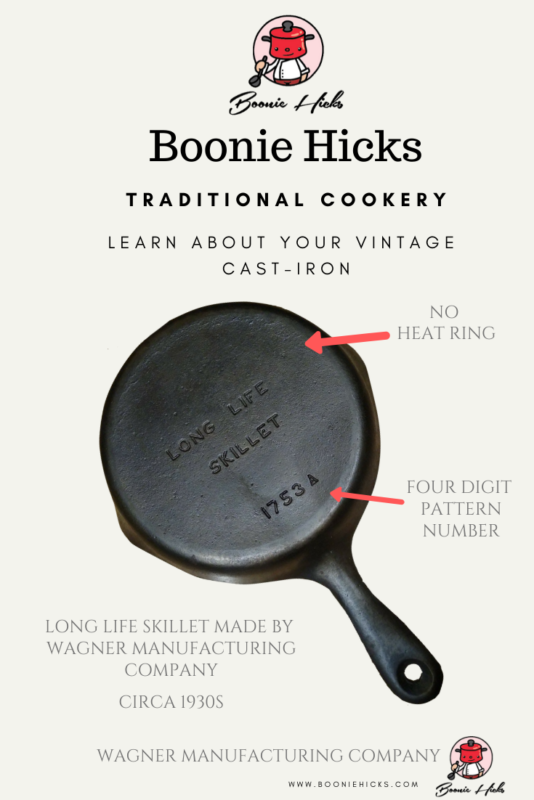
Wardway and Montgomery Ward. The Montgomery Ward Department store contracted Wagner Manufacturing Company to produce an in-store label. Circa the 1930s.
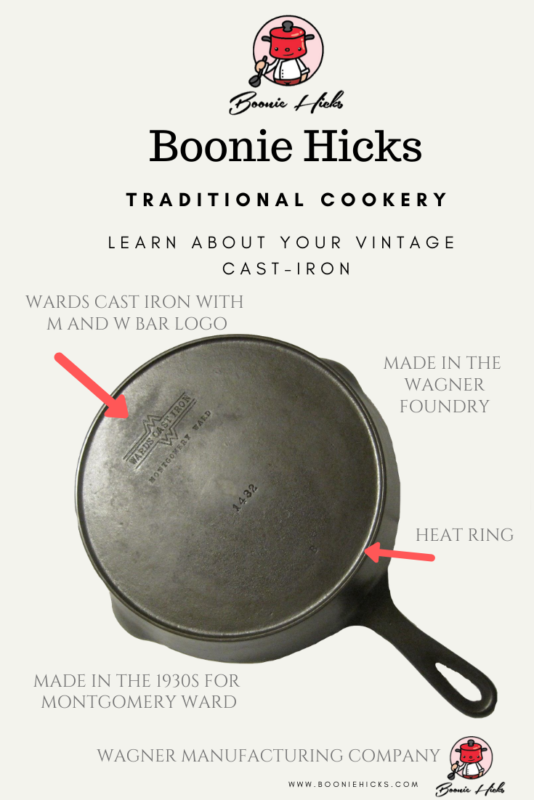
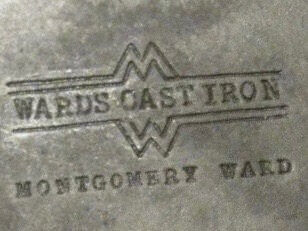
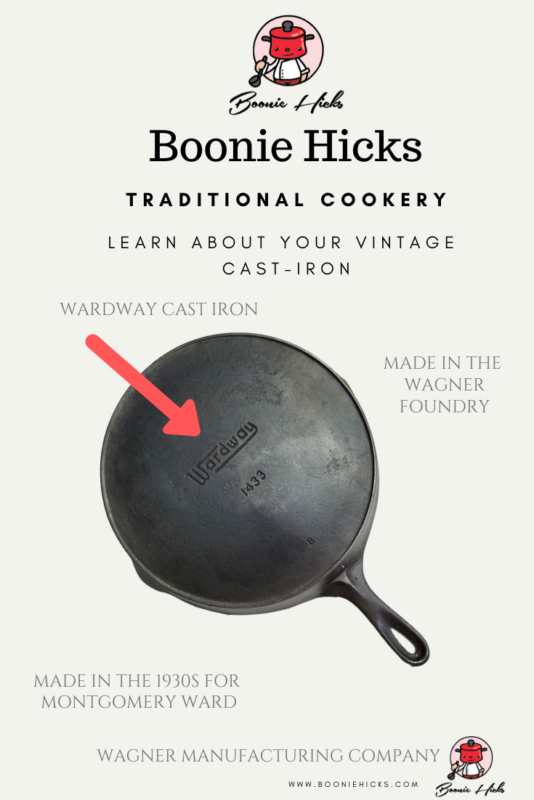
Final Thoughts On Wagner Cast Iron.
Fortunately, Wagner cast iron is more straightforward to date than other foundries of the time. Wagner Ware also has a huge collector base, so dates are well documented. The Cast Iron Collector is a valuable online resource for enthusiasts. Also, there are Facebook groups where you can share your love of cast iron cookware.
The Wagner Manufacturing Company was known for quality over quantity. Therefore, it has a good reputation for making trustworthy products.
Today, collectors and enthusiasts seek out Wagner cookware. However, you don’t need to be a collector to enjoy vintage cast iron. Here are six reasons why Wagner Ware is excellent ironware.
Although many cast iron enthusiasts look for Wagner-made skillets. But you’re not limited there. Wagner Manufactures a wide selection of cast iron cookware. You may find yourself becoming interested in:
- muffin pans
- Dutch ovens
- Scotch bowls
Since Wagner made some of the finest cast iron of the 19th and 20th centuries, Wagner ironware is still sought-after by cast-iron fans and hobbyists alike.


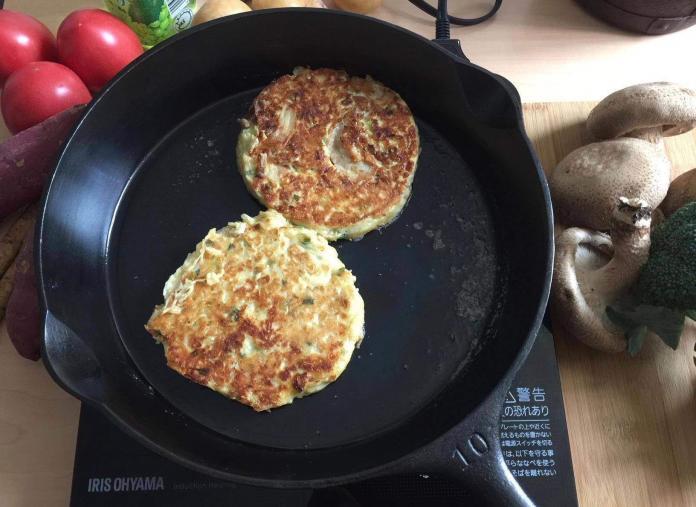
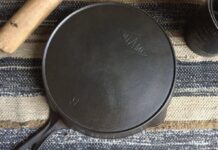
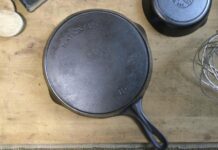
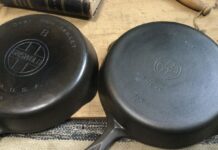



Hi!
Thx much for the detailed info and answering questions. We have a couple of Wagner pieces; a skillet with pour spouts and a Dutch oven. I’d like to send a pix, is that possible?
The skillet had a Wagner Ware Sidney -0- opposite side of the handle closer to the edge. The “W” is large script, “agner” is curved and the “are” straight off the big “W”.
Next line Sidney -0-
Opposite that near the handle side is 1060S.
Do you know the age and also, how can I find a lid. Lodge has some glass lids, would prefer cast iron and also does anything indicate the size? I can measure it, do lids go by inside diameter? Seems to measure 11-1/2” at the opening, about 10” at the base to the curve.
Thanks and blessings
Alex
Hi Alex
Thanks for getting in touch. Those number 10 skillets are a fantastic size.
Unfortunately I’m not sure if newer Lodge glass lids would fit snugly into the skillet. I feel it would be better to contact Lodge directly to double check sizing before you purchase.
If you want to find an original Wagner lid, you want look for one that has 1070 as the pattern number. This should fit your skillet perfectly. However, vintage lids can sell for a pretty penny. So don’t be too shocked when you see the asking price.
Hope this helps and best of luck finding your lid. And you’re always welcome to send over a few pictures. Here’s my email booniehicks@gmail.com
Cheers, have a great day
I have a cast skillet, bottom only says Wagner Ware , only 1 W than rest of logo top & bottom. Bottom of pan says 10 1/2 inch skillet, MADE IN USA handle says 8. Threre is a Z under USA logo
Hi Will
It sounds like you have a later skillet that falls slightly out of the Wagner Manufacturing timeline. These skillets were made by a company that bought the rights to use the Wagner name after the company was sold.
From your description, I’d estimate the age of your skillet to be circa 1960s to early 1970s.
Trust this helps, enjoy your skillet.
Hi Boonie,
I have a “Wagner” arc logo with Sidney O, part number 1056. Can you tell me what time period Wagner used that older logo with the part number instead of the size on the bottom?
Thank you!
Hi Stephen
Thats a great question. From my understanding Wagner made these skillets from the early 1920s and possibly into the 1930s. So there’s a little cross over between this logo and the stylized logo.
Hope this helps
Hello! I recently purchased a Wagner, “Sidney O” 6 qt. dutch oven. I have not received it yet, but am anticipating it any day now. The lid has me perplexed. It has a single, solid, drip ring. Right under the top of that drip ring is a Wagner Ware stamp. There is nothing else stamped on the lid. The handle looks like it is a lot thicker than normal. Also, the inside of the lid looks rough, not smooth like most of them. I am wondering if I have a fake? It fits the DO perfectly though. Thank you for any answers you may have.
Hi Tracy
Congratulations on your purchase. It sounds like you have an old Dutch Oven going by your description. And you’re right to be a little puzzled by the lid. I would expect the cover to be just as smooth and well made as the base. And the single basting ring is not a characteristic of an antique Wagner I’m aware of. I would like to see basting rings in either a zig zag pattern or several toothed rings.
I suspect The lid is a different generation to the original base. Since it’s heavier and rougher than the base, I suspect the lid was probably made after 1960.
Hope this points you in the right direction. You might want to jump on a Facebook cast iron group. There could be some people with knowledge of this particular lid.
It may have a newer lid, but I hope you get a lot of use out of your vintage Wagner.
Thank you so much for the response. I do appreciate it. If it was made after 1965, wouldn’t it have to be stamped, “made in USA,” somewhere on the lid? I do belong to a fabulous “Cast Iron Mafia,” group. I just have this gut feeling that this lid is a fake. If that is the case, then so be it. It will still cook!!! When she arrives in a week, I will shoot you a photo, if you are interested. Then we can both learn something. 🙂 Have a beautiful evening. I am sure we will be chatting again.
Too right, even if it’s a fake it’s going to be a great talking point and kinda neat to use. Once it arrives I’d love to see a picture.
Here’s my email booiehicks@gmail.com
Cheers, have a good day.
Hi, I have a Wagner Wear Sidney 1058 skillet that just had an accident. A triangular piece of the cast iron broke off out of the side. it was not cracked before that I ever noticed and I’ve had it at least 20 years. It can still hold a shallow amount of liquid. Does it have any economic value at all as an antique?
Thank you
Hi M
I’m very sorry to hear your skillet had a little accident. Unfortunately, I believe there is not much monetary value to the pan because of the damage. However, I trust it still holds a lot of sentimental value. However, the fun part is now to look for another antique pan, so you can enjoy another 20 years of good memories.
Sorry for the disappointing news, but there’s lots of skillets out there, and they need a good home.
Hi-
My Aunt used to own a deep chicken cast iron fryer. The lid has three saw tooth rings. The pan is unmarked but has a heat ring. Any ideas why it’s unmarked and some people told me that it’s a Wagner? How old is it?
Thank you so much and I enjoyed reading your website.
Hi Will
Wagner made a lot of unmarked pieces. And it is suspected the company could compete in the lower price range without upsetting customers that paid for branded Wagner ironware. However, this does not mean lower quality.
From your description, I believe your cover was made circa 1950s or 1920-1930s if the pattern is in a zig zag.
Hope this helps.
Hello,
I’m hoping you can help identify the Wagner Ware piece I have. It’s a 60 quart pot with a spigot. It has the Wagner Ware Sidney, 0 logo on the side of the pot with the part number 2110A 60-QT-M. The bottom is flat and no logo on the bottom. It’s 17″W x 18″H. It’s heavy, a little less than 1/2″ thick and has handles and a lid. Any idea what is was used for or when it was made?
Thanks for any assistance.
Katie
Hi there Katie
You certainly have a large pot. Unfortunately, I can’t identify the pattern number. But Wagner manufactured some very large pots as you describe, including pots up to 85 gallons.
These were multi purpose vessels and known as sugar kettles or boilers. It’s a neat piece of history, you’re very lucky.
Thank you Boonie for your detailed site – it really is helpful. I inherited a deep skillet which is very difficult to read the bottom. All I could make out was Sidney so a search of cast iron sidney led me here.
Now that I know the manufacturer, I can barely see that it is indeed a Wagner Ware Sidney -O- and it has an 8 on the top of the handle.
My question mine has no pour spouts. It’s just a nice heavy deep pan.
I couldn’t find any references or pictures of these pans without spouts.
Any ideas?
Hi Corinne
Thanks for your question. When you have a chance please Google search Wagner chicken fryer. A number 8 with no pour spouts? It sounds like you have a chicken fryer. I hope it is for you, because those pans are fantastic cookers.
Trust this points you in the right direction.
Hi Boonie
I have a Drip-Drop Baster lid, and I’m looking for the correct pan that goes with it. It has 3 rings in a zigzag pattern, and on the inside it has the number 1269 in the center.
Thanks for any help you can provide.
Hi Megan
Keep an eye open for pot marked Round Roaster. The pot will have the same pattern number of 1269. This oven is a size number 9, and it’s harder to come by than the number 8. But you’ll find one.
Thanks for the question and good luck on your search.
Hi Boonie
I just returned from a garage sale with what I think is a unmarked Wagner #8 skillet. It has a smooth bottom, back has 10 1/2 INCH SKILLET, MADE IN USA, and centered below that a “M”. There is also a “M” on the back of the handle. The 8 is on the top of the handle where the handle meets the pan. There is no LOGO. It weighs 4.4lbs which is 1.1 lb less than my same size Lodge. There is a slight circular machine, or grinding, pattern on the cook surface. The handle shape looks like in the pictures of Wagners.
It does not rock on a flat surface. They had a lot of skillets at the garage sale. I just picked one Made in USA that looked flat. It still needs more cleaning.
What do you think I have?
Hi John
It certainly sounds like you have an old unmarked Wagner. Well done on your newly purchased skillet, and grinding marks are an added bonus. It sounds to be in great condition.
You mentioned the size number followed by MADE IN THE USA. On unmarked Wagner iron this marking is located on the lower part of the base near the handle. As opposed to another manufacturer that marked their ironware near the top.
Hope this helps confirm your identification. Enjoy your skillet.
I am by no means an expert but I read this on another website:
‘The statement “Made In USA.” American manufacturers began identifying their products as locally made, rather than produced in Asia or Europe, after the year 1960. It was during this time that they were beginning to feel the sting of cheap foreign-made competitors, which were often (but not always) of reduced quality and reliability when compared to American-made products. If a cast iron pan has a “Made In USA” stamp, you can guarantee it is not a vintage cast iron pan manufactured before the 1960s.’
I found a little teapot stored in my basement. My parents started building this house in 1948 or 1949. Both my parents are deceased so I can’t ask any questions about the origin of the teapot. Can you help me identify it. Then bottom is stamped with Wagner ware Sydney -o- with a B on the bottom edge. It looks like it holds maybe 2 cups. Where can I find out the value? My husband was all set to throw it out
Hello Joyce
Thanks for your question. And I’m so pleased you decided not to throw out your kettle. After all it’s lovely keepsake from your parents, and these old pieces should be treasured. I’m not sure of the date of manufacturer. But as an educated guess I’d estimate Wagner made these little kettles from the 1920s onward.
I believe you have a Wagner style B salesman sample or toy kettle. As you can imagine children could play house with these kettles. But salesmen might have also used them as easy to carry samples when showing potential buyers.
You have a neat historical item. If you want to find out about current selling prices, eBay sold listings should give you a rough estimate.
Thanks for sharing Joyce.
Good morning, Mr Hicks
My challenge is a 9 inch Wagner Sydney. It has no heat ring, but has a molded screw impression.
I hope you can identify the year(s) of manufacturing.
It’s priceless, yet would like a reference to its value.
Thank you for your time.
Hi William
It sounds like you have a stylized logo. Check this reference guide for estimates on dates.
I’ve seen the screw indentation on a few Wagner skillets. And it’s believed it was a way for the foundry workers to quickly identification and for quality control.
I’m pleased you value your family ironware as priceless. However, eBay is a good way to learn about current value. Just see the sold listings, to see what buyers are willing to pay.
Have fun cooking up a storm in your vintage pan.
Do you know the age range of the Drip Drop line? Wanting to match a Drip Drop skillet cover to the proper era skillet. Thanks.
Hi Kris
Thanks for getting in touch.
Wagner manufactured several different lids. I believe Wagner made Drip Drop Skillet Cover circa 1920s-1930s. You didn’t mention a pattern number, found on the inside of the lid.
Does your lid have raised lettering, and three zip-zag basting rings? Then I believe you want to look for a 1920s era skillet.
Hope this points you in the right direction.
Please tell me that MAGNALITE cookware has survived. I have had several pieces since I was 13 – in 1950.
Hi Louise
You’re not alone for your fondness of Wagner Ware Mangnalite. Vintage pieces are prized by collectors, and those that use the cookware. But unfortunately, Magnalite is no longer manufactured. However, there are other manufacturers that make heavy-duty cast aluminum cookware. And from all accounts it’s pretty good.
Great to hear you’re enjoying your vintage Magnalite.
Hello!
I have a pot (I’ve seen it listed as a bean pot or cauldron). It has the arched Wagner with the straight Sydney logo. Unfortunately the number is obscured. It doesn’t have legs, it does have a heat ring. It also has a side ring. The diameter of the top of the pot is 9.5 inches, the height is 6.6 inches. Any idea what size it is? I’d like to find a lid for it (I know, very difficult). But it would help in my search if I know what lid I need. Also what is it actually called? I’m guessing the side ring was for pulling off of the fire? Any information you can give me will be greatly appreciated!
Hi Dody
Thanks for your question.
It sounds like you have an early Wagner kettle. Wagner manufactured a variety of kettles. But from your description, I believe you have either a flat bottom kettle or a flat bottom bulge pot, with a heat ring for use on a cast iron wood stove.
And you’re right finding a lid could be challenging. I don’t have a kettle of your description in my collection. However, measuring my other pots, I think you need to keep an eye out for a size 8 lid. But if you find an early lid, please ask the seller if they think the lid will fit, as I’m not 100 percent sure on the size.
Cheers and good luck on your search.
My Wagner skillet is marked 1050Q. What does the Q stand for?
Hi Cindy
Sound like you have a Wagner Ware ashtray. The Q on your small skillet was the mold used in manufacturing process. These letters are similar to how we use batch numbers or bar codes today.
You have a neat piece of history from the later half the 20th-century.
Thanks for your question
Have you seen a skillet with “Wagner” Sydney O. With 7A stamped at bottom? I got this skillet from my Mom and she thinks that it was her Grandmothers. I was trying to date it but haven’t seen any others. It’s my special filet and ribeye pan. Thanks!
Hi Lenore
It’s wonderful you’re researching your antique Wagner skillet. I bet it cooks up a storm, and makes some tasty ribeye.
Check out the picture guide in the article to give you an estimate of the age of your pan. Wagner made many different sizes of the same pan. So to estimate the age of your skillet, you want to identify the logo and correspond it using online resources. Hopefully you’ll use my guide but there are some other site online that you can also use.
Hope this helps and have fun using your vintage Wagner Sidney -O-.
Hi, I have a Wagner Ware skillet that doesn’t appear here. My skillet has the same Stylized Wagner Ware Sidney O that the skillet you describe as “Circa 1920-1924 with heat ring and single digit size number.” Except it doesn’t appear to have a heat ring and the single digit size number is 8 and appears on the upside/visible side of the handle.
My mother raised a family of 11 using this skillet. I inherited the skillet and have been using it regularly since 2010. Please let me know if I overlooked my skillet in your description or if you didn’t add it to the information here.
Please let me know if you are able to provide the estimate cost of this skillet when it was purchased and it’s current value. I have 2 or 3 cast iron corn cake molds and a Dutch oven and will have to look for them to see if they were made by Wagner.
Thank you!
Hi Rose
It’s nice to hear from you and it sounds like you have a nice collection of vintage ironware.
In this article, I focused on collectable ironware manufactured by the Wagner family in the Sidney foundry. And didn’t include Wager Ware cookware made after 1960. After the company was sold to new owners. Check your pan for Sidney -O- under the logo. I suspect it’s missing, and this indicates a later pan. From your description, I’d say your pan could be circa 1960s.
If this is the case, it falls out of the highly collectable vintage ironware. But does mean it’s not any good? Definitely not, your mum has clearly shown the pan can cook up storm. One number 8 Wagner for 11 family members, I guess your mum had to do a lot of batch cooking.
Have a look on eBay sold listings for an indication on value. That way you’ll be able to compare skillets in a similar condition as yours. But I hope you’re in a position to hold on your mums old pan. I’m sure it holds lot of fond memories.
Have fun using your heirloom skillet.
My wife and I love our cast iron cookware. Our skillet #1058 k has a crack in it. Can it be repaired or what is the warranty on it.
Hi Thurston
Thanks for stopping by and checking out the article.
Something tells me you and wife have a sizable cast-iron collection, and it’s great you both share the love of cast-iron cooking.
I think the warranty could be past the expiry date by 50 years. But I have a sneaking suspicion you’re just having bit of fun in the comment section, good for you.
It’s a shame about the crack in the skillet. Hopefully the skillet only has a small hairline crack near the top of the pan, and it’s still watertight. So you can do a bit cooking without any risk of oil leaking.
Happy cooking Thurston
I have a collection of antique cast iron and was wondering if i could send some pics of the ones I cant identify?
Hi Paul
Sure no problem, I’ll see if I can help with your identification.
Here’s my email: booniehicks@gmail.com
Cheers